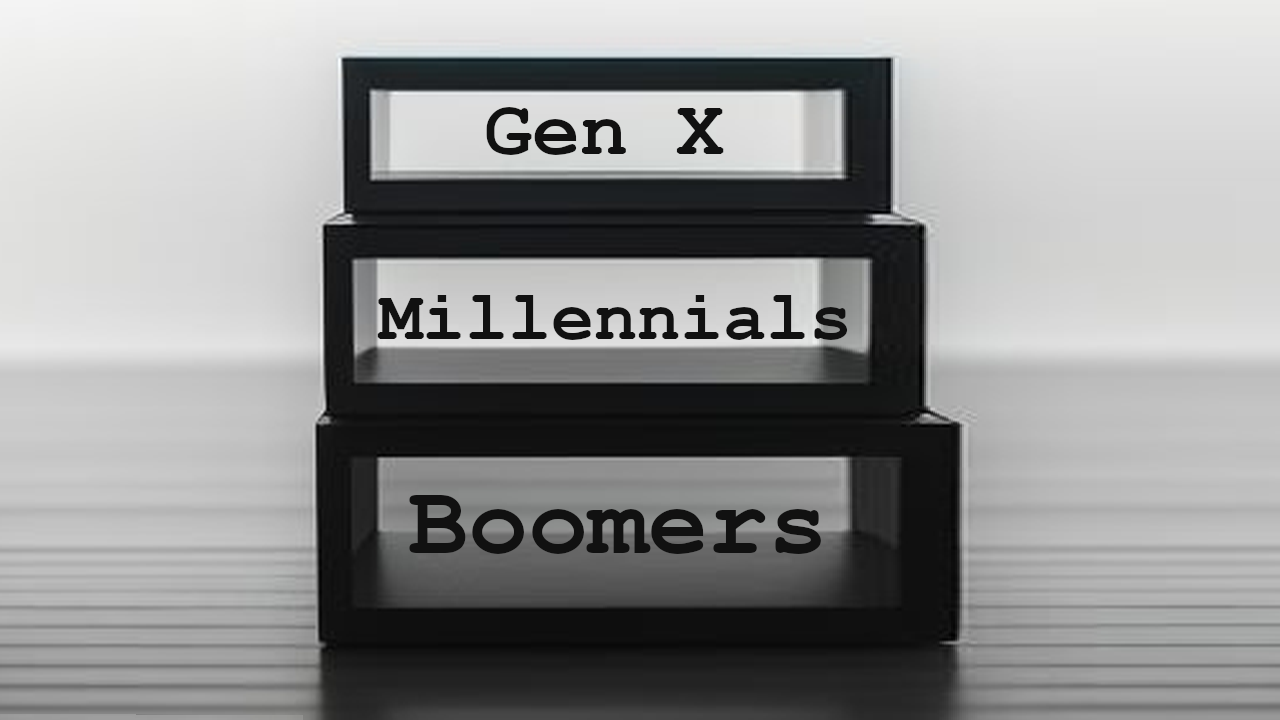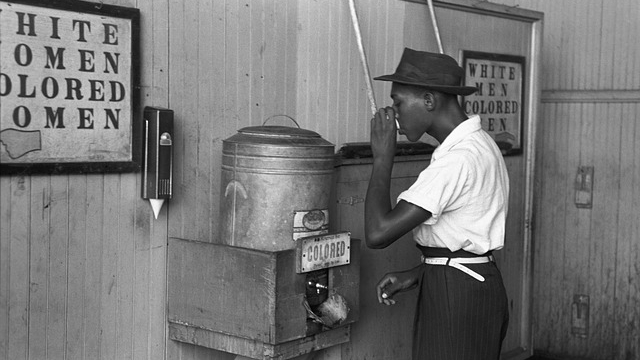
The case for and against using generational labels, from “Gen Z” to “boomers”
The use of generational labels like “Gen Z”, “millennial” and baby boomer” isn’t unanimously accepted. We hear from two experts in workplace ageing who have opposing views on the topic. Daniel Jolles argues that these labels are widely understood and can help promote inclusion by highlighting real experiences of age in the workplace. Sheila Callaham argues that these labels are trivial, misleading and too often lead to pseudoscience and bigotry.
Despite labels for Gen Z, millennial, Gen X and baby boomer being widespread, no official committee decides what to name a new generation or when it will start or end. These labels have largely originated from the Pew Research Center, a US think tank, before evolving organically through popular and social media. In recent times, there have been mounting concerns about the absence of scientific rigor supporting these generational constructs and the potential detrimental effects the labels may have on workplace culture.
In response to these concerns, Sheila Callaham successfully bolstered a campaign against generational labels started by Philip N Cohen, sociology professor at the University of Maryland. This campaign led Pew Research Center to update their approach to these labels and encourage “a healthy dose of scepticism” about relying too heavily on generation alone. However, some researchers, including Daniel Jolles, argue that these labels still have a role to play in creating more age-inclusive workplaces.
Evolve or eliminate generational labels?
Daniel Jolles:
Generational labels are widespread around the globe, and most among us can quickly name the generation we belong to, even if this label is more important to some of us than others. Often these labels represent the differing social and economic experiences that have shaped our lives and careers. The younger workers who make up Gen Z (born between 1997 and 2005) are entering a vastly different workplace than the baby boomers (born between 1946 and 1964) who started their careers in the 1960s. Our attitudes towards work, what we consider to be professional “norms”, as well as our preferences around communication can all be influenced by these early working experiences. That’s not to say these preferences are the same for everyone in a generation, but there can be patterns and trends. It is true that generational labels can be hurtful and even discriminatory, but I believe they are so widespread that we are unlikely to eliminate them. Rather, I would argue for a “better conversation” around generations. This conversation would renounce negative stereotypes, recognise the value of intergenerational diversity and inclusion, and acknowledge that no one is defined by their generation alone.
Sheila Callaham:
Generational labels are widespread, especially in countries with significant Western influence or where English is widely spoken, but that doesn’t make them worth hanging onto. While many of us can name the generation we belong to, only a few people can identify the age ranges within each generational cohort because the exact years those labels represent are inconsistent. For example, baby boomer births can begin between 1940 and 1946 and end between 1960 and 1964; Gen X birth years can start in the early 1960s and end between 1975 and 1982. This means anyone using labels must first define them and each person may choose to do so differently. It’s also true that each new generation experiences a vastly different workplace than previous ones. However, those differences are more strongly related to period effects, indicating gradual change over time in the general population, rather than generation effects, which indicate change limited to a population subgroup based on birth year. These inconsistencies have significant implications for the study and understanding of generations whose labels, like the people who have been randomly assigned to them, grow older. Naming specific age ranges versus using labels is much more effective and more likely to be remembered. And because generational labels are often associated with negative stereotypes across all ages, I argue that specificity is more practical and less likely to perpetuate generational bias and create generational tension.
Useful or useless?
Daniel Jolles:
For too long, the conversation and academic literature around ageing at work has been restricted to “younger” and “older” workers. While there are often more similarities than differences between workers across generations, there are sometimes important differences in attitudes and behaviours. Getting past “older” and “younger” workers allows us to visualise and demonstrate these differences in meaningful “chunks” to non-academic audiences. For example, we recently found that 37 per cent of Gen Z and 30 per cent of millennials said they were experiencing low productivity, compared to 22 per cent of Gen X, and 14 per cent of baby boomers. This is an alternative, more illustrative way of communicating the message that older age is associated with higher self-reported productivity (or simply, older workers report higher productivity than younger workers).
Generational labels can also help illustrate changes over time in a way that is easy for people to understand. For example, millennials are making career decisions while facing house prices more than eight times higher than average wages, compared to baby boomers, for whom the average home only cost just under four times the average wage in the late 1970s. Although the cut-off points for generational labels are somewhat arbitrary, they are designed to capture an inflection point in a demographic shift. For instance, baby boomers refers to increased birth rates following World War II, while millennials refers to those who began their careers just prior to/post the turn of the millennium, alongside the rise of the internet and social media. The categorisations of generation provide greater nuance than simply referring to “older and younger” workers and are somewhat less arbitrary than referring to groups based on their age bracket.
Sheila Callaham:
Generational labels are often the default mode of explanation for complex age-related phenomena observed in the workplace. “We like stories about who we are and who we’re not, and we like to categorise everything into what it is and what it’s not”, says King’s College professor and author Bobby Duffy. Even with arbitrary and variable definitions, the default use of labels can feel familiar and legitimate. While the use of labels may seem straightforward, many people don’t understand the age ranges associated with the label. They must return to the author’s definition and mathematically calculate ages to understand the implied impact. Specificity matters and using actual age ranges is a more practical and effective means of communication. Moreover, it removes the cultural bias one must hurdle before getting to the relevant information, for instance, “boomers” are out of touch, Gen X are apathetic, millennials are narcissistic, Gen Zs don’t want to work.
Constructive or clickbait?
Daniel Jolles:
Leading academics now question the use of generational labels in workplace research, fearing that many generational studies lack rigour and fuel stereotypes. The main concern is that research conducted at one point in time (cross-sectional), can’t distinguish between age-related differences and phenomenon specific to each generation. For example, if I measure ‘workplace innovation’ tomorrow and I find that Gen X is the most innovative generation, I don’t know if this is because workers are at their most innovative in their 50s or if there is something especially innovative about Gen X because I do not have past data to compare to. Many argue that generational analysis should only be based on having this historical data, which would allow comparisons between generations at similar stages of life. For instance, asking if younger workers today are different from younger workers at a specific point in the past. Yet, in practice, disentangling the effects of age (changes that happen to us over our lifespan) and generational differences can be tricky.
There is often insufficient data from the past to compare attitudes and behaviours of today’s younger workers with the attitudes and behaviours of older workers at the same age. The criticism against “point in time” (cross sectional) research is a popular and valid criticism in academia, but all research has shortcomings that can make it hard to understand root causes with confidence. Quality research on topics such as attitudes to social media, political and environmental attitudes, and our own research on workplace productivity and quiet quitting can all leverage generational categories to give meaning and help audiences make sense of data and trends on topics important to society at a given point in time. The problem lies in research that tries too hard to overemphasise differences between generations. Stark contrasts that label generations broadly as “optimistic” or “socially conscious” only bolster negative stereotypes, and are unlikely to help marketers or managers.
Sheila Callaham:
Headlines often sensationalise labels to emphasise differences while omitting similarities, creating unnecessary controversy or emotional response. A study by the OECD argues that “there is much more evidence that workers of all ages broadly value the same things” and that generational labels “underplay the greater similarities in work needs shared across the generations”. The most striking result of the research is how similar the generations are in the values that matter most. For example, family tops the list for all generations. Because online media relies on clicks, headlines about generations are frequently at the expense of in-depth analysis. Using actual data, that is, real numbers, is not so easily sensationalised. Last year, a headline claimed that Gen Z’s preferred benefits differed from previous generations. A deeper look at the report indicated the top priority for all age groups was the same: medical insurance. At the bottom of the list for Gen Z was tuition assistance, which ranked last for all age groups.
The most significant difference, if that’s what people want to see, is that the youngest age groups were more interested in student loan assistance. At that life stage, many would have recently graduated with student loans or still be working to pay them off. Unfortunately, any use of generational labels in research, no matter how benign or accurate, will likely fuel stereotypes. A recent report found that on account of the economy, the majority of US baby boomers were planning to stay in their home rather than downsize. This research was covered by the Wall Street Journal as “Boomers bought up the big homes. Now they’re not budging”, a sensationalised headline perpetuating stereotypes and frictions.
The final word
Jolles emphasises the value of generational labels in highlighting societal shifts, communicating research findings to the public, and facilitating important discussions on age diversity in the workplace. He advocates for a better, more inclusive conversation around generations. Callaham, on the other hand, challenges their utility, citing inconsistencies and the perpetuation of harmful stereotypes. She advocates for the specificity of age ranges as a more effective means of communication.
Despite their different positions on generational labels, both agree on their widespread usage and potential pitfalls. They also agree that workers have much more in common when it comes to what they value at work, than differences. With that in mind, they recommend that leaders avoid using generational labels to represent negative stereotypes and proactively respond to inappropriate use in the workplace.
Moreover, it will be productive for leaders to promote an intergenerationally inclusive dialogue that transcends generational labels. Doing so enables leaders to build an inclusive, equitable culture that rewards, develops, and promotes employees of all ages based on merit.
About the authors
 |
Daniel Jolles (PhD) is a Behavioural Science Researcher at The Inclusion Initiative (TII) at the London School of Economics and Behavioural Science. In his research, Daniel focuses on applying behavioural science to questions of age-diversity and inclusion in the workplace. |
 |
Sheila Callaham is a co-founder and executive director for the US-based non-profit Age Equity Alliance. Sheila is a long-time contributor to Forbes and has extensive global experience in corporate communications and change management. |
Article source: The case for and against using generational labels, from “Gen Z” to “boomers”, CC BY-NC-ND 2.0. This article represents the views of the author(s), not the position of LSE Business Review or the London School of Economics and Political Science.
Header image source: ©Bruce Boyes CC BY-NC-ND 4.0, made using a base image adapted from a Perchance AI Photo Generator Professional Photo created with the prompt “three rectangles stacked vertically”.






